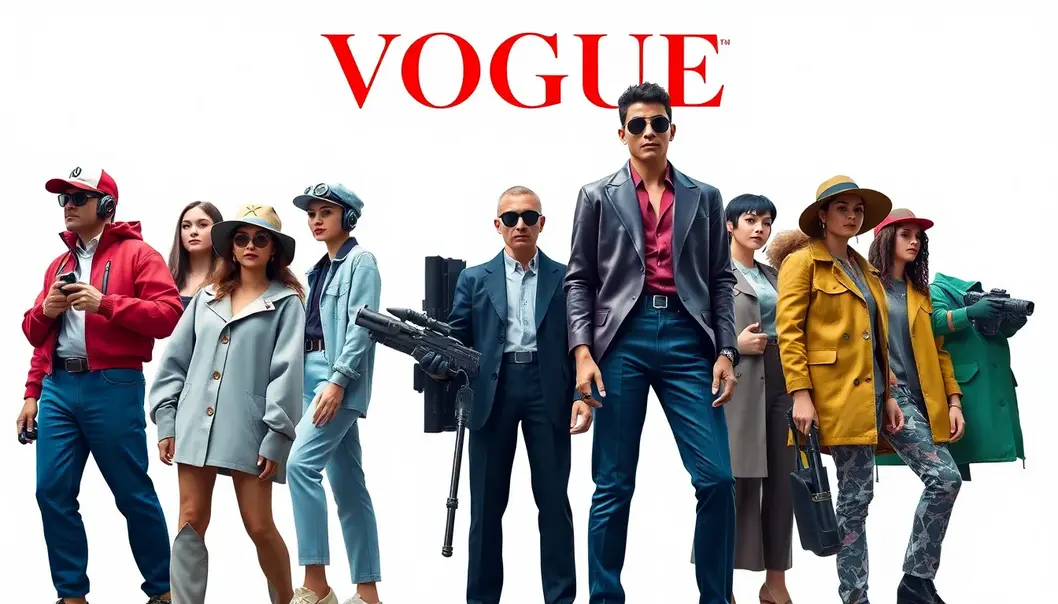The world of video games has always been a digital runway, innovating with a flair for the trendiest aesthetics. Just as clothing styles ebb and flow, video games unite both art and technology, crafting styles that mirror fashion’s heartbeat. From pixelated avatars adorned in the simplest patterns to today’s characters with couture-like ensembles, video games have been a silent partner to the fashion world. As software advancements allow for new design possibilities, the styles within games have grown ever more intricate and expressive, mirroring or even defining real-world fashion trends.
Pixel Chic: The Early Days of Game Fashion

In the dawn of digital entertainment, the visual language of video games was defined by strict technological limitations. Early game developers faced significant challenges crafting compelling and stylish avatars within the confines of limited pixels and a narrow color palette. Each pixel and shade were meticulously orchestrated to convey identity and personality in mere bits.
In this nascent era, the technical constraints often dictated the style choices that designers could make. Early 8-bit and 16-bit consoles supported a minuscule range of colors and resolutions compared to today’s standards. As a result, simplicity was not only a design choice but a necessity. Designers needed to craft characters that were immediately recognizable despite these limitations. This constraint led to bold color contrasts and simple geometric shapes, establishing a visual shorthand that prioritized clarity and memorability over detail.
Among the most iconic characters born out of these constraints are avatars that became fashion icons in their own right, such as the unnamed plumber donning a red cap and overalls, whose unassuming yet distinctive outfit remains a cultural stalwart. These early characters set a precedent by using clothing and color to express their roles and identities despite technological limits.
Furthermore, some designers used these constraints creatively to experiment with character aesthetics, introducing avant-garde designs within the limited scope. These early ventures into digital fashion didn’t merely add flair; they built a foundation for the relationship between gaming and style that would evolve into today’s industry.
Another significant milestone came with the first hints of fashion partnerships creeping into the gaming world, foreshadowing today’s collaborations between game franchises and haute couture. Some of the earliest collaborations featured simplified versions of real-world attire, bridging the gap between virtual and physical fashion in rudimentary forms.
These early digital fashion experiments were instrumental in shaping both narrative and gameplay elements and laid crucial groundwork for the future growth of character customization and style evolution within games. As technology advanced, the seeds planted in these fledgling days blossomed into more complex, stylized avatars. The partnerships that seemed novel then now form a crucial aspect of modern gaming culture. The evolution witnessed in these early days of game fashion underscores the intrinsic linkage between technology and style, a theme that continues to resonate as we progress ever further into the digital age.
From Runway to Game Way: Today’s Digital Couture

In the expanding universe of video games, fashion is more than mere aesthetics; it’s a pivotal part of the experience. Where once digital attire was limited by the confines of pixels and palettes, modern games are rewriting fashion narratives. Developers collaborate with elite fashion houses, blending haute couture with digital art, creating virtual wardrobes that rival Parisian runways.
The intersection of high fashion and gaming began as a novelty but has blossomed into a symbiotic relationship. Today, luxury brands see games as a frontier for innovative storytelling and engaging new audiences. Cutting-edge technology allows these brands to design digital counterparts of their collections, expanding their influence and accessibility. Virtual fashion shows held within these games captivate millions, offering experiences beyond the limitations of physical space.
Characters in these environments are no longer just avatars; they are style icons influencing both virtual and real-world fashion. This transformation is seen in characters sporting attire inspired by premier designers, turning digital couture visible and desirable. The attention to detail in fabric simulation and garment physics elevates these creations from static designs to dynamic, interactive art pieces.
Fashion’s influence doesn’t stop at aesthetics—it impacts players’ expressions of identity. Gamers meticulously curate their avatars, echoing their real-life style or exploring entirely new personas. This desire for personalization drives a booming industry within games, where players invest in exclusive items, similar to real-world luxury goods.
Digital couture’s impact extends into reality, where trends birthed in games inspire high-street fashion. The cyclical nature of influence sees designers drawing from digital aesthetics to inform their physical collections, blurring the lines between the physical and virtual fashion realms.
As this trend grows, the exploration of style across multiple realities is becoming more than a niche interest. Players find themselves participating in fashion ecosystems that influence and are influenced by real-world scenarios. This interplay enriches both industries and challenges traditional concepts of style and identity. The fusion of technology and design in video games illustrates a new frontier in fashion, where imagination knows no bounds.
Final words
Video games, much like the fashion industry, remain in a constant state of evolution and reinvention. As we move forward, the creativity born from this synergy only promises more innovative and daring trends, setting new boundaries for both gaming and fashion. The marriage of these realms suggests that every game release might soon become a style event in its own right. As technology progresses, we anticipate even more immersive experiences that blend fashion with gameplay, inviting us all to play the most stylish role of all: ourselves.
Dive deeper into the world of gaming fashion with exclusive insights and updates.
Learn more: https://www.fashiongaminginsider.com
About us
Fashion Gaming Insider offers an inside look at the intersection of fashion and gaming. We provide in-depth articles, industry news, and exclusive interviews with designers and developers who are paving the way for future trends in digital couture.

